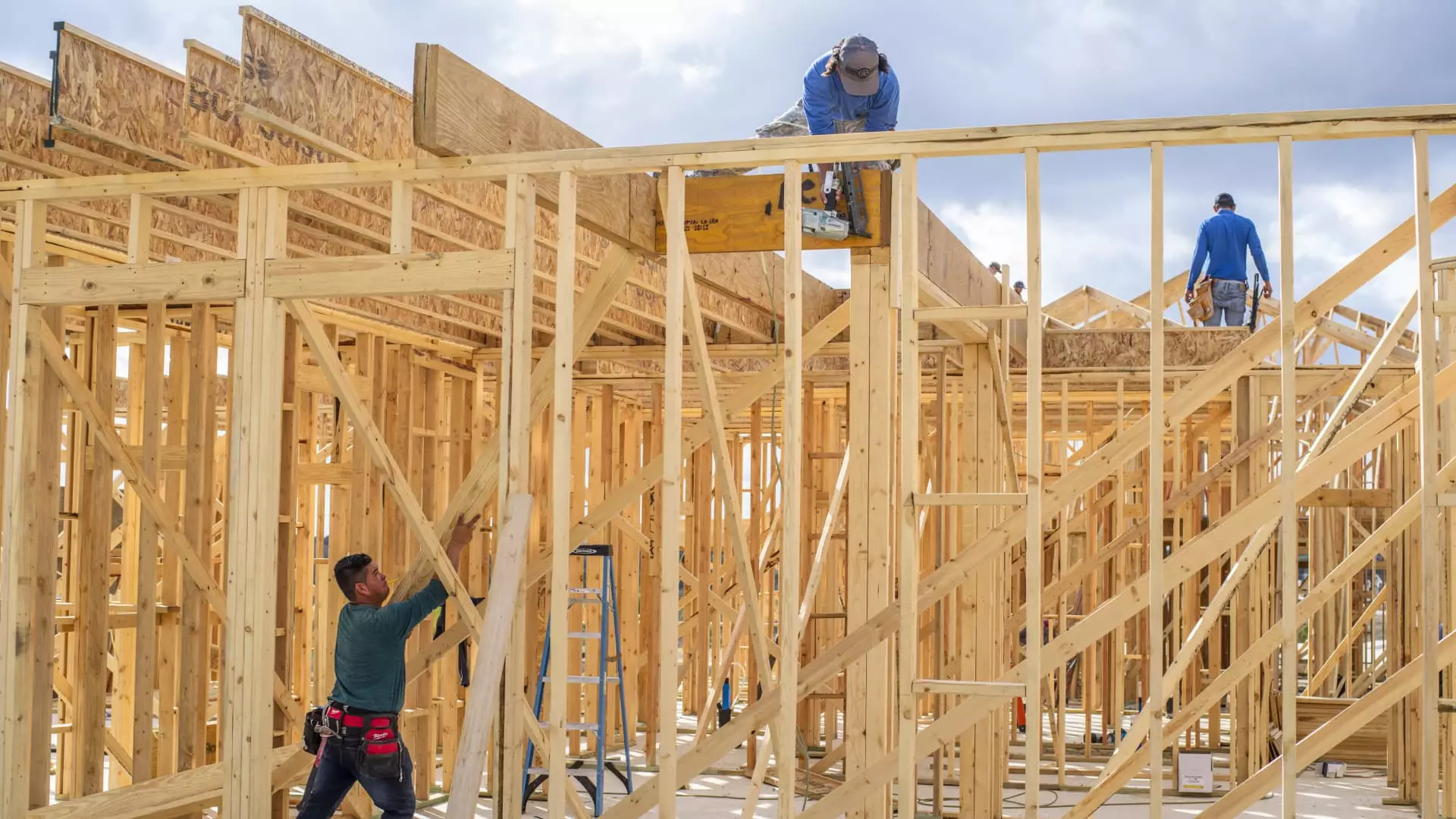The landscape of homebuilding in the United States has been dramatically altered by shifting economic indicators and external pressures, culminating in a noteworthy decline in sentiment among single-family homebuilders. February’s figures indicate a considerable downturn, reflecting broader anxieties that stem from tariffs and elevated costs, which threaten the stability of the housing market. The National Association of Home Builders (NAHB) reported a significant drop in the Housing Market Index (HMI), a crucial indicator that measures builder confidence in the market. This analysis delves into the implications of the current sentiment and its potential impact on the future of home construction.
A Detailed Look into Builder Sentiment
Builder sentiment dipped sharply by five points in February, marking a steep decline that has brought the HMI down to a troubling level of 42. This reading is less than the benchmark of 50, which denotes neutral sentiment, and is indicative of a market in distress. To put this in perspective, last year’s sentiment measured at 48 during the same period, signaling that builders have grown increasingly pessimistic. NAHB Chairman Carl Harris pointed out that while homebuilders remain hopeful for policies that favor development, factors such as regulatory uncertainty and rising costs have forced a reevaluation of expectations for the upcoming 2025 market.
The Components of Builder Sentiment
Breaking down the HMI reveals concerning trends across its three main components: current sales conditions, buyer traffic, and future sales expectations. Current sales conditions fell to 46— a decline of four points—while buyer traffic plummeted to an alarming 29, a drop of three points. Most troubling, future sales expectations nosedived by 13 points to a reading of 46, the lowest since late 2023. This multifaceted decline signals a lack of confidence from builders, who are grappling not only with demand but also with external pressures that could further exacerbate market instability.
Various economic factors contribute to this dwindling sentiment, particularly the striking increase in mortgage rates. Following an upward trend, the average rate for a 30-year fixed mortgage now exceeds 7%, a substantial rise from the lower 6% range observed earlier. Consequently, higher home prices compound issues of affordability for potential buyers, effectively narrowing the pool of viable clients for homebuilders.
The looming tariffs imposed on materials sourced from Canada and Mexico have further complicated the situation. NAHB chief economist Robert Dietz highlighted that a significant percentage of essential materials, including 32% of appliances and 30% of softwood lumber, are reliant on international trade. This dependency raises concerns about escalating costs, which builders fear could deter buyers and muddy the economic waters even more.
Homebuilders are now faced with the unsettling reality of a decreasing number of housing starts, a stark contrast to last year’s data. As the vital spring selling season approaches, the decline in builder sentiment suggests a potential reduction in available housing supply, which could exacerbate existing issues of affordability and accessibility in the housing market. Certain homebuilders have already reported dwindling demand in their quarterly results, reflecting a troubling trend.
Despite attempts by the Federal Reserve to stimulate the economy by lowering short-term interest rates, builders have observed that mortgage interest rates remain stubbornly high. This has resulted in a decrease in buyer demand, as prospective homeowners navigate a landscape rife with affordability concerns. Notably, builders are also reporting a decrease in the percentage of those reducing prices, which fell to 26% in February from 30% in January, indicating a strategic response to dwindling demand.
The Future of Homebuilding
As the market grapples with these challenges, the future of home construction remains uncertain. The diminishing efficacy of sales incentives poses a further dilemma for builders: when potential buyers face financial barriers, traditional enticements lose their appeal. The intersection of high prices, elevated interest rates, and a shrinking buyer pool leads to a bleak outlook for the upcoming months.
The decline in builder sentiment signals significant hurdles for the homebuilding industry, characterized by rising costs, regulatory uncertainty, and prevailing affordability challenges. As homebuilders confront these realities, the ripple effects are likely to affect not just the construction industry but also contribute to wider economic challenges in the housing market.

